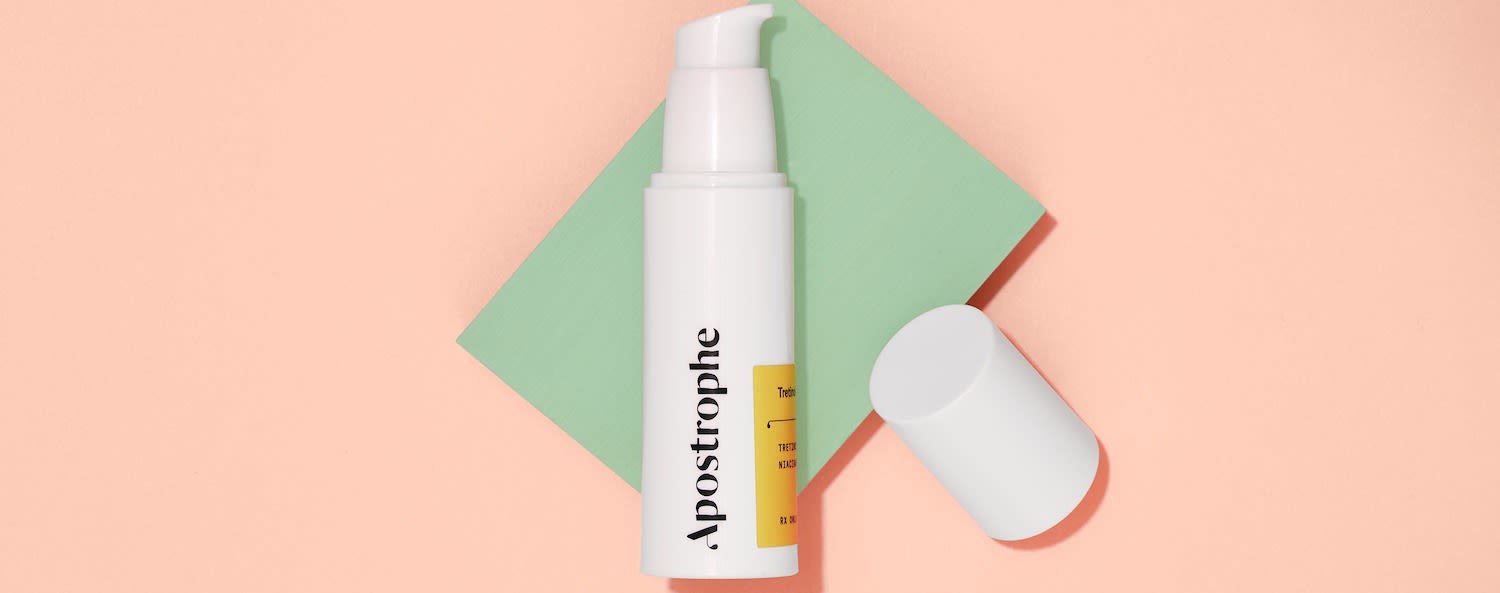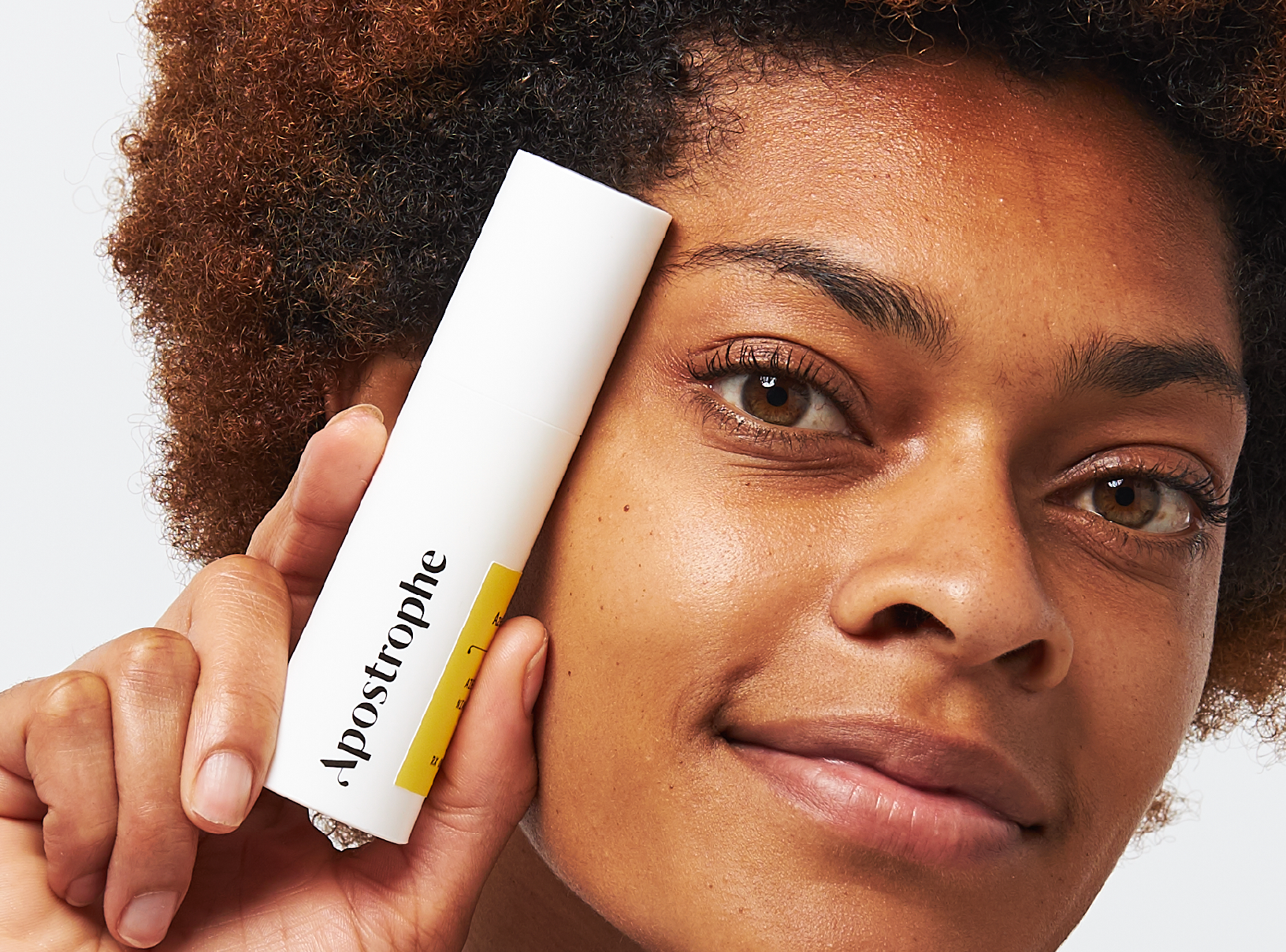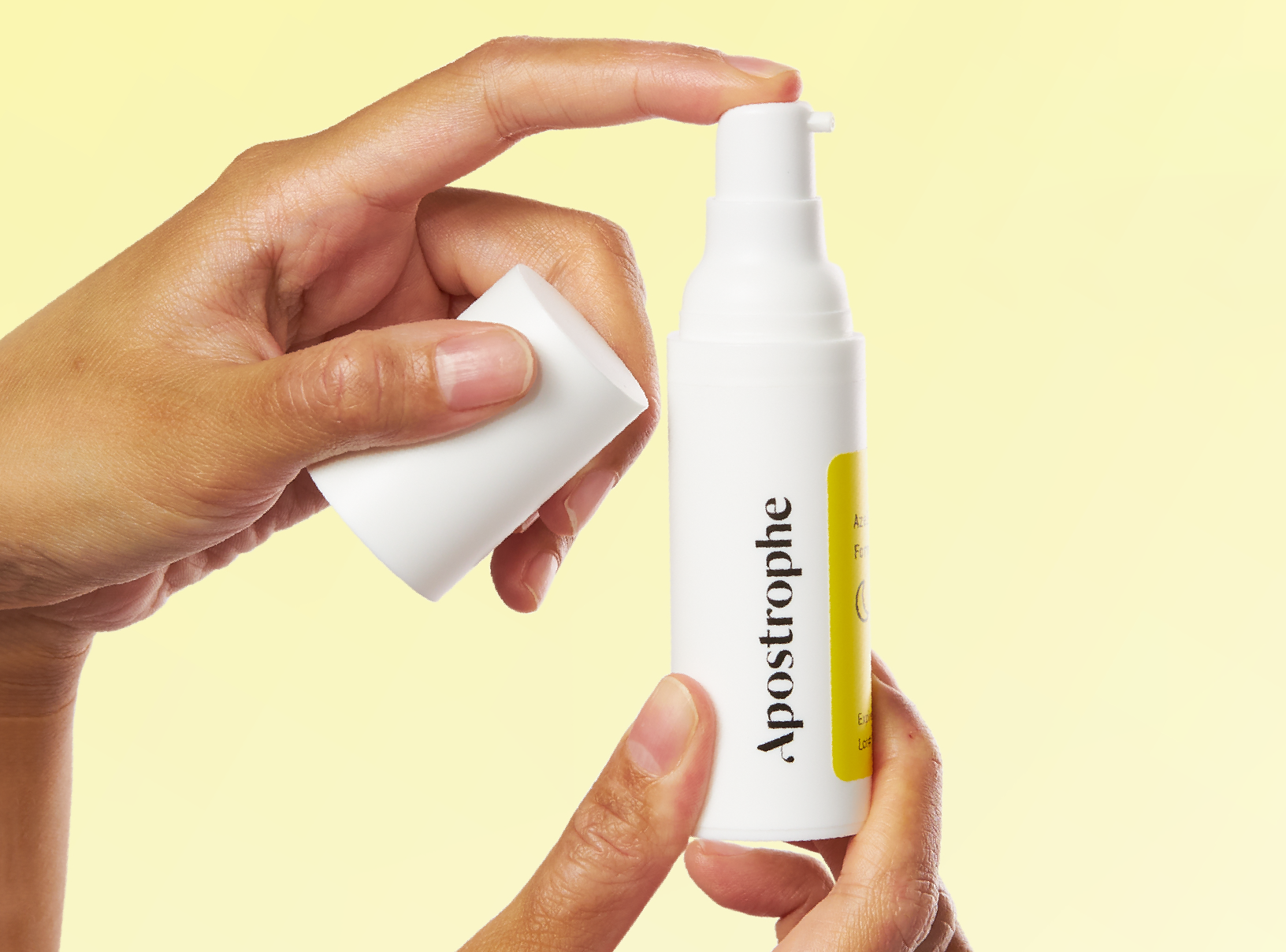Education
Tretinoin Cream Side Effects


SHARE
Education
Tretinoin Cream Side Effects
Medically reviewed by Mary Lucas, RN
Written by Apostrophe Team
Last updated 4/5/2024
As one of the most widely used topical retinoids, tretinoin has a great safety record. However, as with all medications, there are several potential side effects of tretinoin that you should be aware of before using the gel, cream or solution.
Tretinoin is most commonly sold as a topical cream, gel or solution. This form of the medication is intended for use as an anti-aging and acne treatment. Tretinoin is also manufactured as an oral medicine for use as a treatment for acute promyelocytic leukemia.
Our list of tretinoin side effects below focuses on the topical form of tretinoin used to treat acne and the physical effects of aging. It does not include side effects for oral tretinoin, which is typically not used to treat acne or as an anti-aging treatment.
Below, we’ve listed both the common side effects of tretinoin use that you may experience while under treatment, and the medication’s less common potential side effects you should be aware of.
Common Side Effects of Tretinoin
On the whole, topical tretinoin is an extremely safe medication with few side effects. Most users experience few or no side effects, with studies of tretinoin skin treatments noting that the cream and gel forms of tretinoin have a “low incidence of reported adverse effects.” The trick is learning how to use tretinoin cream properly and effectively while mitigating these potential side effects.
The most common side effects of tretinoin gel, cream and solution are skin redness, abnormal skin peeling and increased sensitivity to sunlight.
Many of these side effects are most common during the first two to six weeks of tretinoin use—a period many users refer to as the tretinoin “purge” or adjustment period. During this period, your skin is more likely to feel irritated and peel as the tretinoin gets to work preventing acne.
Redness of the Skin
Redness of the skin is the most common side effect of topical tretinoin. A small percentage of tretinoin users experience some degree of redness after using tretinoin, typically during the first few days of applying the cream, gel or solution to the face.
Skin redness can occur for several reasons. A common reason for overly red skin is using too much tretinoin, either by applying an overly large amount of the topical tretinoin product to your face or using a gel, cream or solution that contains too high concentration of tretinoin.
Tretinoin can speed up the rate at which your skin sheds, helping to increase the rate at which acne disappears. For people with sensitive skin, this can also result in temporary redness in the first few days or weeks of using tretinoin as the skin adjusts to the medication.
Most doctors recommend that when learning how to use tretinoin, you start a small, pea-sized amount of tretinoin for your entire face. It’s also best to start with low to moderate concentration of topical tretinoin to reduce your risk of experiencing redness and other skin irritation.
Abnormal Skin Peeling
Abnormal skin peeling is another one of the common side effects of tretinoin cream. Many users notice an increase in skin peeling during the initial weeks of treatment. The peeling is often quite severe, resulting in a sunburn-like texture and dryness to your skin (à la the tretinoin "purge").
Skin peeling usually occurs as a result of tretinoin increasing the speed of exfoliation, causing your body to shed old skin faster than normal. The peeling can range from small pieces of dry, flaky skin to large pieces of exfoliated, peeling skin on your face.
Like skin redness, skin peeling from tretinoin tends to go away after two to six weeks of using the cream, gel or solution.
Increased Sensitivity to Sunlight
Tretinoin is an exfoliant, meaning it speeds up the rate at which your body replaces old skin cells with new ones. During and after the first few weeks of treatment with tretinoin, your skin may feel more sensitive to sunlight than normal.
During this period, it’s very common for tretinoin users to develop sunburn faster than normal due to increased sensitivity.
If you need to go out in the sun during the first two to six weeks of tretinoin usage, it’s best to apply a SPF 30+ sunscreen to your skin to reduce the risk of sunburn. In general, you should aim to minimize direct sun exposure during the first few weeks of using tretinoin.
Even after the tretinoin “purge” period is complete and your skin has exfoliated, it’s important to protect your skin when in the sun. Using sunscreen and avoiding excessive sun exposure will help you limit sunburn and sun damage when using tretinoin.
Most doctors also recommend applying tretinoin at night, typically shortly before bed, to reduce the effects of direct sun exposure on your skin.
Uncommon Side Effects of Tretinoin
On the whole, severe side effects from topical tretinoin are rare. However, a small percentage of tretinoin users note side effects ranging from skin discoloration to small blisters. Like the more common side effects of tretinoin, these side effects tend to occur early in treatment.
Below, we’ve listed four uncommon side effects of tretinoin that you should be aware of. If you experience any of these side effects while using topical tretinoin, contact your doctor immediately for more information about the best treatment option for you.
Skin Discoloration
Tretinoin can fade spots on the face, evening out your skin tone and help to hide the blotchy coloration that can affect many people’s facial skin.
In some cases, however, tretinoin can also cause small patches of skin to darken, producing noticeable skin discoloration. This side effect of tretinoin is rare and usually occurs in the initial weeks or months of tretinoin usage.
Skin discoloration from topical tretinoin generally reverses on its own after you stop using the medication. If you have significant skin discoloration, it’s best to contact your doctor for advice and guidance.
Skin Inflammation
Although it’s rare, tretinoin can potentially cause skin rash and inflammation. On the occasion it does occur, Inflamed and/or itchy skin is most common during the tretinoin "purge" period, which lasts for roughly two to six weeks after you begin treatment.
If you experience skin inflammation that’s significant, painful or lasts for longer than a few hours after applying tretinoin to your face, contact your doctor immediately. Like many tretinoin side effects, skin inflammation often solves itself but requires medical attention if severe or painful.
Skin Blisters
In rare cases, tretinoin can cause a rapid onset dermatitis condition, including the development of small skin blisters on your face.
Blisters from tretinoin are uncommon, affecting only a small percentage of people that use the topical treatment. They can develop on one side of the face or both sides and typically go away on their own within 24 hours.
Other small bumps and burns from tretinoin can develop from using an overly strong tretinoin cream or gel (for example, a .1% tretinoin cream) or from using tretinoin cream, gel or solution too frequently. Our guide to tretinoin has everything you need to know about what doses are available on the market and what you can expect from them.
Like with skin discoloration and inflammation, it’s best to contact your doctor if you experience blisters after using tretinoin that don’t heal within 24 hours. To learn more about debunking the myth and truth about tretinoin, head on over to our Debunking Tretinoin Myths for the lowdown.
This article is for informational purposes only and does not constitute medical advice. The information contained herein is not a substitute for and should never be relied upon for professional medical advice. Always talk to your doctor about the risks and benefits of any treatment.
Shop this post

Topical Retinoids
Like what you just read? Sign up for our email list to get the scoop on skincare science delivered straight to your inbox.

Education
What is milia?
What is milia? Today, we’re jumping into one type of bump that you may have heard about most commonly in infants — milia.
Read More
Education
Best moisturizer for acne-prone skin
If you have combination acne-prone skin, figuring out which moisturizer is best for your skin might be tough. In this guide, we break down the best moisturizer for combination, acne-prone skin.
Read More
Education
How to build a face care routine
As you get into skincare, it might seem overwhelming, especially trying to figure out the order you're supposed to apply products in. Below, we detail how to build a face care routine for your skin!
Read More
